
|   |

|   |
 e-mail: ukb7@rediffmail.com Mask and masquerade Photos: courtesy the artists December 15, 2017 All noble writings are capable of multiple interpretations in different times and in varied contexts. Tagore's 1936 dance-drama Chitrangada - - culled from the Mahabharata - - is usually taken to depict the unambiguous stand favouring women's empowerment. After the initial hesitancy of the Manipuri princess when she initially decides to undertake the guise of almost an enchantress, she discards the pretence and comes out triumphant. But supposing she went a step further? Could she have possibly discarded her masquerading role as a gaudy temptress and come direct to challenging the male ego, in a full frontal confrontation with the object of her adoration - - without any compromise of her essential femininity? 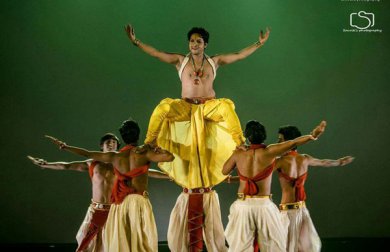
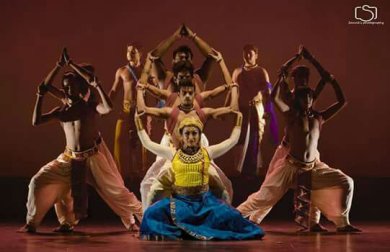

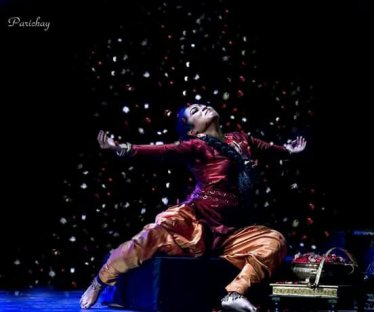
Hridmajhare (In the Heart of Hearts), presented recently by Abantipur Om Foundation, had an elderly Chitrangada (Priyanka Karmakar) ruminating thus, taking recourse to the poet's 1892 verse-version, to make the cardinal point: I won't beseech you through my outer beauty, but would charm you through my love… Opines the choreographer Shyamal Mallick with training in Kathakali and contemporary dance, "Our title suggests that the true love resides within, and can do without the sham adornments of the exterior." Donning the role of Arjuna, he used for himself Kalaripayattu and contemporary styles, with an assortment of Kathakali and Bharatanatyam mudras, while Chitrangada (Moumi Dasgupta) used well the basically lasyang Bharatanatyam. But what captured the viewers was a choreographic amalgam of a bewildering variety of styles and forms. The visual narrative established the core tenet - the negativity of mind and taking up a daring contrary stance - by masked dancers who forcefully discarded their masks. This was the beginning with gymnastic extravaganza that yielded to a serenading of the inner grace. The grooming of the princess as a "prince" alongside "hunter boys" as companions was steeped in Raibenshe, gymnastics, Kalaripayattu and Chhau. The first flowering of amour was accompanied by a blending of Bharatanatyam with contemporary movements. Arjuna's refusal to accept the gawky princess and the latter's recourse to both Madana and Rituraj - executing Kathak - was a take-off from Tagore's verse-play. Some striking visuals followed, with gymnastic "pyramids" and "temples" created on stage that provided underpinning of Chitrangada's solemn resolution not to be misled any more. The gorgeously bedecked princess was clearly mere ephemera. A satiated and obviously exhausted Arjuna then sought to retreat. The villagers looking for their missing princess - vigorously pursued by dacoits performing leaps and back flips - - were a delight. The final denouement and the emphatic reconciliation of the surging femininity with the conceding male bravura was well etched. 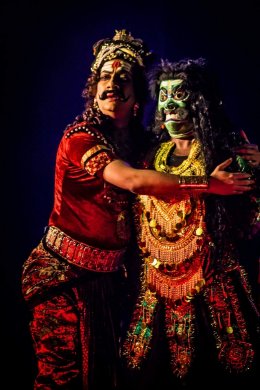 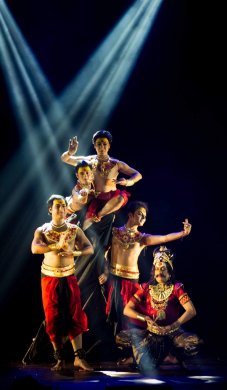
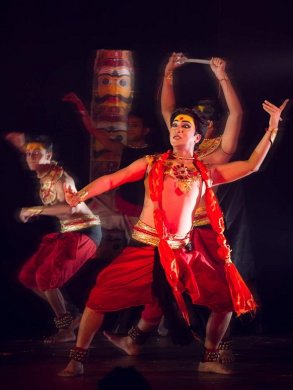
Raavan, presented recently by Shinjan Dance Academy, was the other episode from the Ramayana for a change, which again set topsy-turvy the accepted norms. The rise and fall of the demon-king has been heard by enthralled millions through the ages. Yet it has been a story scripted by the victors and the vanquished never got their version across. Interestingly, there are many other versions where Ravana is far from demonized. Believed to be born to a great sage, Ravana and his mother are worshipped - together with Shiva - - at Koneswaram temple in Trincomalee of Eastern Sri Lanka. His name is cited as a major character in the texts of the Nyingma school of Tibetan Buddhism. He is considered to be the most revered devotee of Shiva in Bali, Indonesia and his sculpture as 'Thotsakan' is a guardian of Wat Phra Kaew temple in Thailand. According to the Jain annals, Ravana was a devout Jain, as a Vidyadhara king having magical powers. Nearer home, virtues of his character had been extolled in the traditional Sanskrit theatre, Kutiyattam, by its great exponent Mani Madhava Chakyar. Choreographed and directed by Kohinoor Sen Barat, the dance-drama was enacted with great verve. Other than music, it was supported by a spirited commentary that made, at the outset, two points. First, Ravana's clan Rakshasa referred to raksha, to protect. Second, the mythical allusion to Ravana's ten heads was nothing but a metaphor for his abounding wisdom that could only be contained in ten heads. Indeed, Ravana - with his father the sage Vishrava (or Vesamuni) and his mother, the daitya princess Kaikesi - grew up to be a great scholar and a devout follower of Shiva. The narrative unraveled the little-known facades of the Ravana mythology: his mentally-challenged son Atikaya who fought to death against the monkey prince Angada, much to Ravana's relief; his falling out with his dear sister Surpanakha; his filial bonds with his brave son Meghnad; his infatuation for Sita; his love-hate relationship with Rama; and his much-lamented death in an unequal battle against the divine incarnation of Vishnu. The performance had only male dancers, mainly executing the tandava angik of Bharatanatyam and contemporary forms. The eponymous role was essayed by the choreographer himself in Kathakali and contemporary style. In a total emphasis on ekaharya abhinaya, the female roles were done with aplomb by the male dancers in the ensemble. Interestingly, a character - - dancing in masked Purulia Chhau style - - enacted the role of a doubting Tom: questioning all through Ravana's actions and motivations, and yielding only at the end to his sagacity to take off his mask in deference. Both these performances featured in the Anniversary Festival of Uday Shankar on his 117th birthday in Kolkata organised by the Mamata Shankar Ballet Company and proved the adage that the only thing constant in the continuing flux of Indian choreography was change.  Dr. Utpal K Banerjee is a scholar-commentator on performing arts over last four decades. He has authored 23 books on Indian art and culture, and 10 on Tagore studies. He served IGNCA as National Project Director, was a Tagore Research Scholar and is recipient of Padma Shri. Post your comments Please provide your name and email id when you use the Anonymous profile in the blog to post a comment. All appropriate comments posted with name & email id in the blog will also be featured in the site. |